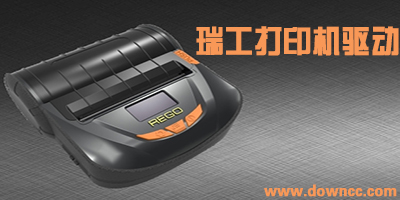
瑞工打印机驱动大全由绿色资源网小编这里,小编为大家带来了一些非常常用的打印机驱动程序,如p58v、p88v、p80、p58b、工lp58等,用户只需要按照自己所购买的打印机型号下载对应的驱动程序即可使用,欢迎有需要的朋友到绿色资源网下载使用!
瑞工简介
北京瑞工科技发展有限公司是一家专业提供打印解决方案的高新技术企业。成立以来,始终坚持自主创新,现已拥有多项知识产权,并通过了ISO9001质量体系认证。瑞工产品广泛应用于政务、医疗、物流、制造、零售、金融、保险等领域。近年来,公司致力于提供完整、可靠和符合行业标准的多平台无线打印解决方案,提供多种打印机语言的驱动、SDK、定制化的开发,帮助客户实现简单、高效、经济的打印需求。
3.33M / 2016-06-24 / v1.1.0.1 官方最新版
瑞工p80驱动是由瑞工官方为该型号的打印机打造的驱动程序,如果你的打印机与电脑的连接出现了异常,下载此驱动可以帮你很好的解决这个问题,欢迎有需要的朋友到绿色资源网下载使用! 瑞工RG-P80打印机参数简介打印方
3.33M / 2016-06-24 / v1.1.0.1 官方最新版
瑞工p88v驱动适合购买了该型号打印机的用户进行使用,它可以有效地解决打印机与电脑连接异常的问题,欢迎有需要的朋友到绿色资源网下载使用! 瑞工RG-P88V打印机参数简介打印方式:行式热敏 打印速度:250毫米/秒
3.33M / 2016-06-24 / v1.1.0.1 官方最新版
瑞工RG-P58A打印机是一款非常好用的热敏pos打印机,用户安装了驱动程序以后,就可以让打印机与电脑正常的进行连接,轻松的完成打印工作,欢迎有需要的朋友到绿色资源网下载体验! 瑞工RG-P58A打印机参数简介打印方式
3.33M / 2016-06-24 / v1.1.0.1 官方最新版
瑞工p58vie驱动是专为该型号的产品打造的打印机驱动程序,打印机要想正常的进行打印,就需要安装此驱动程序,安装好驱动以后,打印机就可以正常的与电脑进行连接,便捷的完成打印工作,欢迎有需要的朋友到绿色资源网
3.33M / 2016-06-24 / v1.1.0.1 官方最新版
瑞工p58b驱动适合购买了该型号打印机的用户使用,打印机要想正常的进行打印,就需要安装驱动程序,如果你的打印机与电脑的连接出现了异常,下载此驱动可以帮你很好的解决这个问题,欢迎有需要的朋友到绿色资源网下载
3.33M / 2016-06-24 / v1.1.0.1 官方最新版
瑞工p58v驱动是由瑞工官方为该型号的pos打印机打造的驱动程序,用户安装了驱动以后,就可以让打印机进行正常的打印工作了,欢迎有需要的朋友到绿色资源网下载使用! 瑞工REGORG-P58V打印机参数简介打印方式:行式热
2.10M / 2016-06-30 / 官方版
瑞工P88IV打印机驱动是一款专门为瑞工用户设计的打印机驱动程序,主要为用户解决打印机无法被连接或者无法被识别等问题,方便快捷,有需要者欢迎下载! 产品特色支持打印机身份验证,电脑软件绑定; 支持网络打印状
3.33M / 2016-06-24 / v1.1.0.1 官方最新版
瑞工lp58驱动是由瑞工官方推出的一款打印机驱动程序,适合购买了该型号打印机的用户进行使用,它可以有效地解决打印机不能正常的连接电脑和电脑不能识别打印机的问题,欢迎有需要的朋友到绿色资源网下载使用! 瑞工
3.33M / 2016-06-24 / v1.1.0.1 官方最新版
瑞工p58vc130驱动适合购买了该型号打印机的用户进行使用,如果你的打印机与电脑的连接出现了异常而导致无法正常的打印,下载此驱动程序可以帮你很好的解决这个问题,欢迎大家到绿色资源网下载使用! 瑞工RG-P58VC13
20.94M / 2023-03-22 / v5.0 绿色版
新瑞工资查询系统手机版是一款非常火爆的工资查询和管理软件,这款软件能为用户实时的查询和管理自己的工资哦,让你清楚的知道明细,感兴趣的朋友赶快来绿色资源网下载体验吧!新瑞工资查询系统手机版介绍新瑞工资条